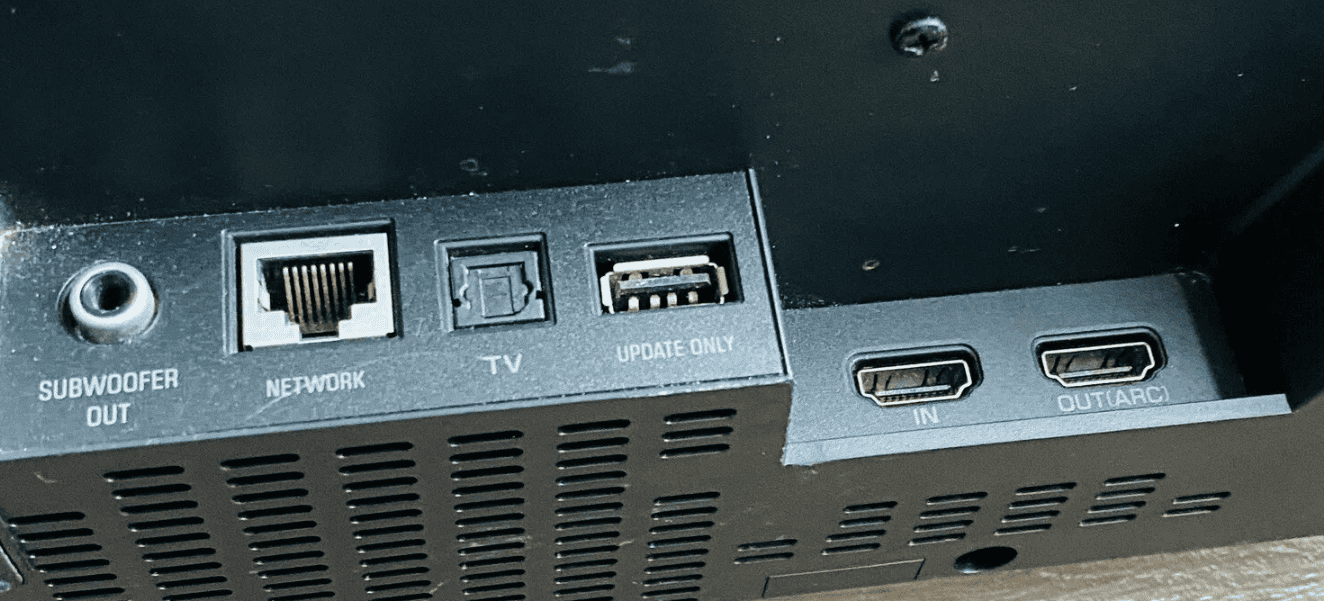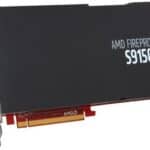HDMI ARC, or Audio Return Channel, simplifies the connection between your TV and audio system, such as a soundbar or receiver. Before HDMI ARC, multiple cables were necessary to send audio and video signals to and from various devices. With the introduction of HDMI ARC in HDMI specification 1.4, audio signals can traverse both ways, reducing the number of required cables. This technology allows your TV to send audio data upstream to a soundbar or receiver, streamlining the setup and control of your home theater system.
Enhanced Audio Return Channel, known as eARC, is a more advanced version found in HDMI 2.1. It expands bandwidth and speed, enabling support for higher-quality audio formats. By using either HDMI ARC or eARC, you can ensure your system makes use of the latest technology to deliver the best audio experience possible from your TV to your sound system with the simplicity of a single cable.
HDMI: Making Home Entertainment Simple
HDMI ARC (Audio Return Channel) and its upgrade, eARC (Enhanced Audio Return Channel), are nifty features built into the HDMI standard. They simplify connecting your TV to sound systems like soundbars and AV receivers. With ARC and eARC, you can send audio from your TV back to your audio device using the same HDMI cable that carries video to your TV.
How Does HDMI ARC Work?
Before ARC, if you wanted the best audio quality from your TV, you needed to connect an extra optical or audio cable from your TV to your sound system. HDMI ARC simplifies this by allowing the HDMI cable to carry both video and audio signals in both directions.
The Advantages of HDMI eARC
eARC is the next-generation version of ARC and it brings several key improvements:
- Higher Bandwidth: eARC can handle a lot more audio data, meaning it supports higher-quality audio formats like Dolby Atmos and DTS:X with greater detail and clarity.
- Improved Compatibility: eARC is a mandatory feature of HDMI 2.1, the latest HDMI standard, ensuring wider compatibility with newer devices.
- Simplified Setup: Like ARC, eARC uses a single HDMI cable for both audio and video, simplifying your setup and reducing cable clutter.
When to Choose eARC over ARC
If you’re a movie buff or audiophile who wants the best possible sound quality, eARC is the way to go. It unlocks the full potential of high-quality audio formats like Dolby Atmos, offering a more immersive and detailed listening experience.
Understanding the Differences
Let’s take a closer look at the key differences between HDMI ARC and eARC:
| Feature | HDMI ARC | HDMI eARC |
|---|---|---|
| Bandwidth | Up to 1 Mbps | Up to 37 Mbps |
| Audio Formats | Dolby Digital, DTS | Dolby Atmos, DTS:X, Dolby TrueHD, DTS-HD Master Audio |
| HDMI Version | 1.4 and above | 2.1 |
Do I Need a New HDMI Cable for eARC?
While older “High Speed” HDMI cables can work with eARC, using an “Ultra High Speed” HDMI cable designed for HDMI 2.1 is recommended to ensure full bandwidth and optimal performance.
Is eARC Backward Compatible?
Yes, eARC is backward compatible with ARC. If your TV has an eARC port and your sound system has an ARC port, they should still work together, but you won’t get the full benefits of eARC’s higher bandwidth.
Do I Need to Enable eARC?
In most cases, eARC should be enabled by default when you connect an eARC-compatible TV to an eARC-compatible sound system. However, you might need to adjust settings in your TV or sound system’s menu to ensure it’s activated.
Final Thoughts
HDMI ARC and eARC are game-changers for home entertainment setups. They simplify connections, enhance audio quality, and offer a more immersive experience for movies, TV shows, and games. Whether you choose ARC or eARC, you’ll enjoy the convenience and quality that these technologies bring to your home theater.
Key Takeaways
- HDMI ARC enables two-way audio transmission between a TV and sound system using one cable.
- The eARC feature is an advanced version with higher bandwidth for superior audio quality.
- Using HDMI ARC or eARC simplifies audio setup and system control for home theaters.
Understanding HDMI ARC and eARC
This section explains the evolution from HDMI ARC to eARC, highlighting differences like enhanced audio and video capabilities. It tackles technical aspects, usage benefits, and the potential challenges consumers might face when using these technologies.
Technical Overview of ARC and eARC
HDMI ARC, or Audio Return Channel, allows a TV to send audio data upstream to an AV receiver or soundbar via a single HDMI cable. eARC, or Enhanced Audio Return Channel, is the advanced version found in HDMI 2.1. It offers increased bandwidth, enabling higher-quality audio formats such as Dolby Atmos and DTS. While HDMI 1.4 introduced ARC, HDMI 2.1 makes eARC possible, supporting uncompressed audio and advanced audio formats.
Connectivity and Compatibility
For HDMI ARC, users need an HDMI cable connecting their TV’s ARC port to their audio device. eARC also requires connection via HDMI ports but demands a higher-quality cable for maximum functionality. Compatibility extends to many modern audio devices, including soundbars and AV receivers. A single remote can control these devices thanks to CEC, Consumer Electronics Control, which is supported by both ARC and eARC.
Benefits of Using HDMI ARC/eARC
Using HDMI ARC/eARC simplifies the setup of home theater systems, reducing cable clutter by negating the need for separate audio and video cables. eARC’s increased bandwidth and speed allow for enriched audio quality capable of handling formats like Dolby TrueHD and Dolby Digital Plus. This results in audio that stays true to the creator’s intent, synchronized perfectly with the video, enhancing the viewing experience for 4K and 8K content.
Challenges and Considerations
Setting up ARC/eARC is relatively straightforward, but it’s important to ensure that all devices are compatible and that the correct HDMI inputs are used. Bandwidth limitations of ARC may pose challenges in handling the most advanced audio formats, a problem solved by eARC. Cable quality is crucial; for eARC, an Ultra High Speed HDMI Cable is recommended. Attention to settings on both the TV and audio devices is necessary to activate ARC/eARC functionality.







